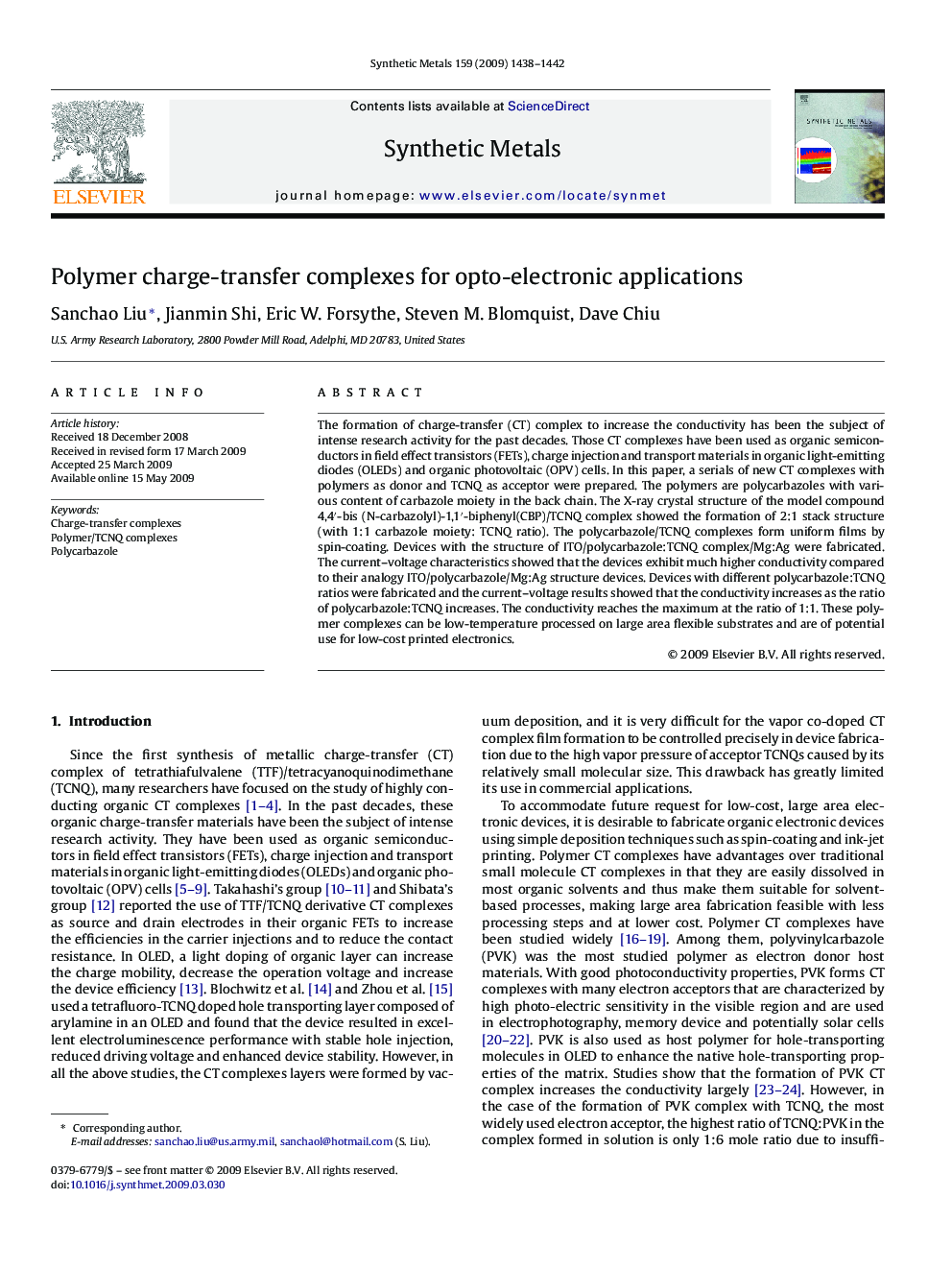| Article ID | Journal | Published Year | Pages | File Type |
|---|---|---|---|---|
| 1443175 | Synthetic Metals | 2009 | 5 Pages |
The formation of charge-transfer (CT) complex to increase the conductivity has been the subject of intense research activity for the past decades. Those CT complexes have been used as organic semiconductors in field effect transistors (FETs), charge injection and transport materials in organic light-emitting diodes (OLEDs) and organic photovoltaic (OPV) cells. In this paper, a serials of new CT complexes with polymers as donor and TCNQ as acceptor were prepared. The polymers are polycarbazoles with various content of carbazole moiety in the back chain. The X-ray crystal structure of the model compound 4,4′-bis (N-carbazolyl)-1,1′-biphenyl(CBP)/TCNQ complex showed the formation of 2:1 stack structure (with 1:1 carbazole moiety: TCNQ ratio). The polycarbazole/TCNQ complexes form uniform films by spin-coating. Devices with the structure of ITO/polycarbazole:TCNQ complex/Mg:Ag were fabricated. The current–voltage characteristics showed that the devices exhibit much higher conductivity compared to their analogy ITO/polycarbazole/Mg:Ag structure devices. Devices with different polycarbazole:TCNQ ratios were fabricated and the current–voltage results showed that the conductivity increases as the ratio of polycarbazole:TCNQ increases. The conductivity reaches the maximum at the ratio of 1:1. These polymer complexes can be low-temperature processed on large area flexible substrates and are of potential use for low-cost printed electronics.
